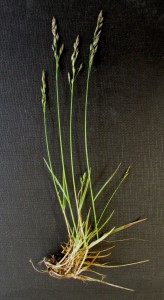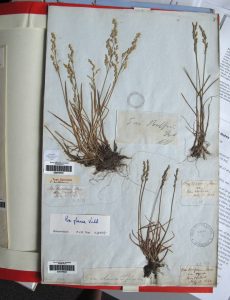 There is so much in the news about loss of biodiversity, and species going extinct, that it is pleasant to be able to report a contrary piece of news – of survival and continuity. A new student is about to start a PhD at Royal Botanic Garden Edinburgh on the life and work of John Hutton Balfour (1808–1884), the Regius Keeper of the RBGE who, during his tenure of the Keepership, held in tandem with the chair of Botany at Edinburgh University from 1845 until 1879, transformed the then almost 200-year-old establishment as a teaching and research institution, with a public herbarium of international scope. Balfour was responsible for the Garden’s iconic 1858 Temperate Palm House, and (in 1876) for doubling the size of the Garden with the acquisition of the policies of Inverleith House as an arboretum (and official RK’s residence).
There is so much in the news about loss of biodiversity, and species going extinct, that it is pleasant to be able to report a contrary piece of news – of survival and continuity. A new student is about to start a PhD at Royal Botanic Garden Edinburgh on the life and work of John Hutton Balfour (1808–1884), the Regius Keeper of the RBGE who, during his tenure of the Keepership, held in tandem with the chair of Botany at Edinburgh University from 1845 until 1879, transformed the then almost 200-year-old establishment as a teaching and research institution, with a public herbarium of international scope. Balfour was responsible for the Garden’s iconic 1858 Temperate Palm House, and (in 1876) for doubling the size of the Garden with the acquisition of the policies of Inverleith House as an arboretum (and official RK’s residence).
 But there are other memorials to Balfour. In his day he was famous for leading field trips to the Scottish Highlands for undergraduate medical students. It was on these that he earned his nickname of ‘Old Woody Fibre’. On one such excursion, on 15 July 1842, he discovered a new alpine grass on the slopes of Ben Vorlich (the northern-most of the ‘Arrochar Alps’). This was named for him as Poa balfourii by his friend Richard Parnell, an Edinburgh ink-manufacturer and specialist in British grasses. The meadow grasses of the genus Poa are problematic due to their unorthodox sexual habits, many being ‘apomictic’, able to set seed without a male genetic contribution, so that variants are propagated in pure lines. Poa balfourii is no longer considered distinct from Poa glauca, a boreo-arctic species described from Norway in 1790, and a rare British montane species. Last Sunday I thought I would see if the plant still grew at Balfour’s original site, the ‘type’ locality. Ben Vorlich is a steep climb, and not very interesting, although the swards of whorled caraway (Carum verticillatum) in damp pasture at its base was a joyous sight for an East-coast botanist. I had no idea where to start looking, other than that the grass had been found on the slope overlooking Loch Sloy. On reaching the lowest part of the shoulder that eventually reaches the summit were some dramatic rocks, fissured with chasms and deep caves in which one could imagine fugitive Jacobites hiding out. The most conspicuous grasses were the silvery Deschampsia flexuosa, and Festuca vivipara with shaggy locks of sprouting spikelets, but the appearance of a tuft of glaucous roseroot hinted at interesting geology. Looking up in a dark crevice what should there be but the delicate tufts of Poa balfourii, still clinging to a shady ledge 161 years later.
But there are other memorials to Balfour. In his day he was famous for leading field trips to the Scottish Highlands for undergraduate medical students. It was on these that he earned his nickname of ‘Old Woody Fibre’. On one such excursion, on 15 July 1842, he discovered a new alpine grass on the slopes of Ben Vorlich (the northern-most of the ‘Arrochar Alps’). This was named for him as Poa balfourii by his friend Richard Parnell, an Edinburgh ink-manufacturer and specialist in British grasses. The meadow grasses of the genus Poa are problematic due to their unorthodox sexual habits, many being ‘apomictic’, able to set seed without a male genetic contribution, so that variants are propagated in pure lines. Poa balfourii is no longer considered distinct from Poa glauca, a boreo-arctic species described from Norway in 1790, and a rare British montane species. Last Sunday I thought I would see if the plant still grew at Balfour’s original site, the ‘type’ locality. Ben Vorlich is a steep climb, and not very interesting, although the swards of whorled caraway (Carum verticillatum) in damp pasture at its base was a joyous sight for an East-coast botanist. I had no idea where to start looking, other than that the grass had been found on the slope overlooking Loch Sloy. On reaching the lowest part of the shoulder that eventually reaches the summit were some dramatic rocks, fissured with chasms and deep caves in which one could imagine fugitive Jacobites hiding out. The most conspicuous grasses were the silvery Deschampsia flexuosa, and Festuca vivipara with shaggy locks of sprouting spikelets, but the appearance of a tuft of glaucous roseroot hinted at interesting geology. Looking up in a dark crevice what should there be but the delicate tufts of Poa balfourii, still clinging to a shady ledge 161 years later.
